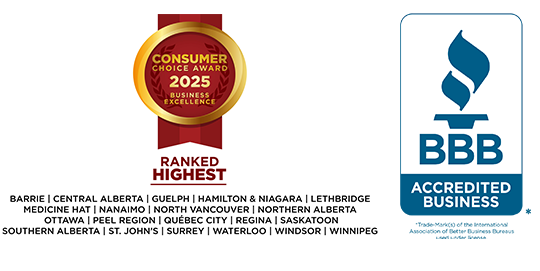The terminology surrounding debt problems and solutions can be confusing. How much debt is “overwhelming” debt? What does it mean to be insolvent — does it simply mean owing too much money to too many credit accounts? And what is the correct, “official” term for the professional who administers bankruptcies and consumer proposals?
Carrying a lot of debt is stressful enough, without struggling with the descriptions.
First: What Is Insolvency?
Insolvency is a rather scary-sounding term for a very uncomfortable financial state: insolvency is defined as owing more than $1,000, an inability to make all your payments as they become due, and having liabilities (debts) that equal more in value than the person’s assets (cash, investments, property).
Insolvency can be quite temporary. For instance, you may lose your job and briefly pay your bills late but get another job and bring your accounts up to date. However, insolvency can settle in for the long term due to unexpected circumstances and become impossible to remedy without help.
A Licensed Insolvency Trustee’s Role
A Licensed Insolvency Trustee is a federally regulated and licensed professional, rigorously trained in debt solution strategies and related legal proceedings. A Licensed Insolvency Trustee is the only professional authorized to file bankruptcies (consumer and corporate), consumer proposals and Division 1 proposals.
Credit counselling services often refer individuals to Licensed Insolvency Trustees, but you may also make a free initial appointment with a Licensed Insolvency Trustee in your area directly to discuss solutions for your debt situation.
“I Thought They Were Just Called Trustees”
Until 2016, trustees licensed by Canada’s federal government to administer bankruptcies were called Bankruptcy Trustees. In April 2016, the professional designation “Licensed Insolvency Trustee” or “LIT” was adopted.
Licensed Insolvency Trustees are licensed by Canada’s Office of the Superintendent of Bankruptcy (OSB) — just as Bankruptcy Trustees were before 2016. Many are also Chartered Accountants or holders of other professional designations.
Individuals applying to become LITs must first complete a comprehensive course of study through the Chartered Insolvency and Restructuring Professional Qualification program and pass the Competency based National Insolvency Exam to obtain their CIRP (Chartered Insolvency and Restructuring Professional) designation. The next step is an oral board exam administered by the OSB which grants the license if the candidate is successful.
Fees charged by LITs are regulated by the federal government. Your first appointment with an LIT is free, and usually is a source of a great deal of useful information.
Thereafter, if a debtor chooses to file a bankruptcy or a consumer proposal, most or all of the LIT’s fees will be rolled into the monthly payments for the debt solution.
Do You Need the Help of a Licensed Insolvency Trustee?
By far the hardest part of meeting with a professional to discuss debt solutions is the realization, before you make your first appointment, that you need help with your debts.
If you are like most consumers with serious debt difficulties, the problem creeps up gradually. LITs understand that no one intends to run up too much debt, and that the problem does not typically stem from a lack of responsibility. Rather, debts can build up because of simple optimism about future income, or due to unexpected reversals such as the loss of a job. Unavoidable, “surprise” expenses can also contribute, especially for people with young families.
As debts increase, so do the stresses of keeping accounts current, and worries about overdue payments.
Licensed Insolvency Trustees are a valuable resource for anyone experiencing the grinding stress of too much debt. Since LITs are trained in counselling consumers about many insolvency solutions (not just bankruptcy and consumer proposal), an LIT can advise you of a range of options that may ease or resolve your debt issues.
In short, if you are experiencing debt stress, it’s not too early to seek advice from a Licensed Insolvency Trustee. Your first appointment is free.
What To Expect When You Meet with a Licensed Insolvency Trustee
Licensed Insolvency Trustees work with debtors to arrive at fair and practical solutions that serve the interests of both the debtors and the creditors.
When you make your first appointment, plan to tell the LIT about your income, expenses, assets (property and funds) and debts. You won’t need exact numbers at your first appointment, but just enough information to give the LIT a general idea of your financial situation.
Using this information, the LIT may be able to recommend options such as credit counselling or debt consolidation and suggest next steps for you. Or, if your situation is somewhat more serious, you may explore consumer proposal or bankruptcy.
Bear in mind that your conversation with the LIT is confidential, and you won’t be pressured to choose a course of action.
If filing a consumer proposal or a bankruptcy appears to be the best choice, you will decide when to proceed and whether to continue to work with the Licensed Insolvency Trustee you’ve just consulted.
First Step: Make Your Appointment!
It’s not easy to admit that you need financial advice. However, most people who have consulted with a Licensed Insolvency Trustee about their debt issues wish they had acted sooner, and saved days or weeks of worry. Your meeting will be your first step towards a better financial future.



